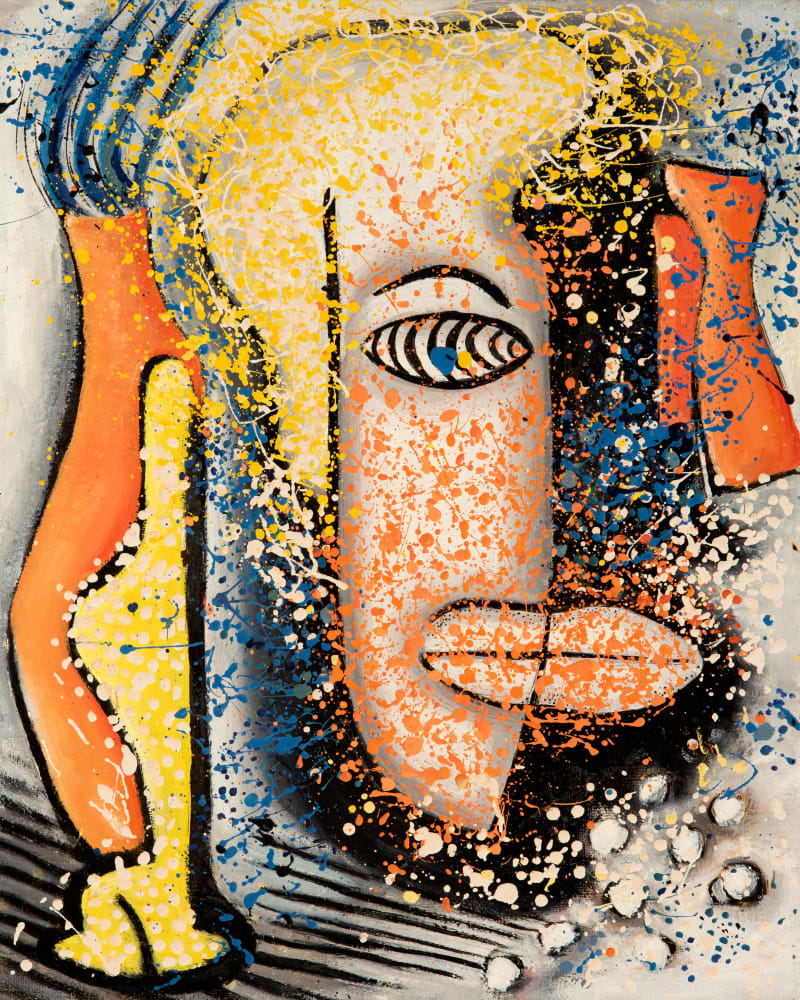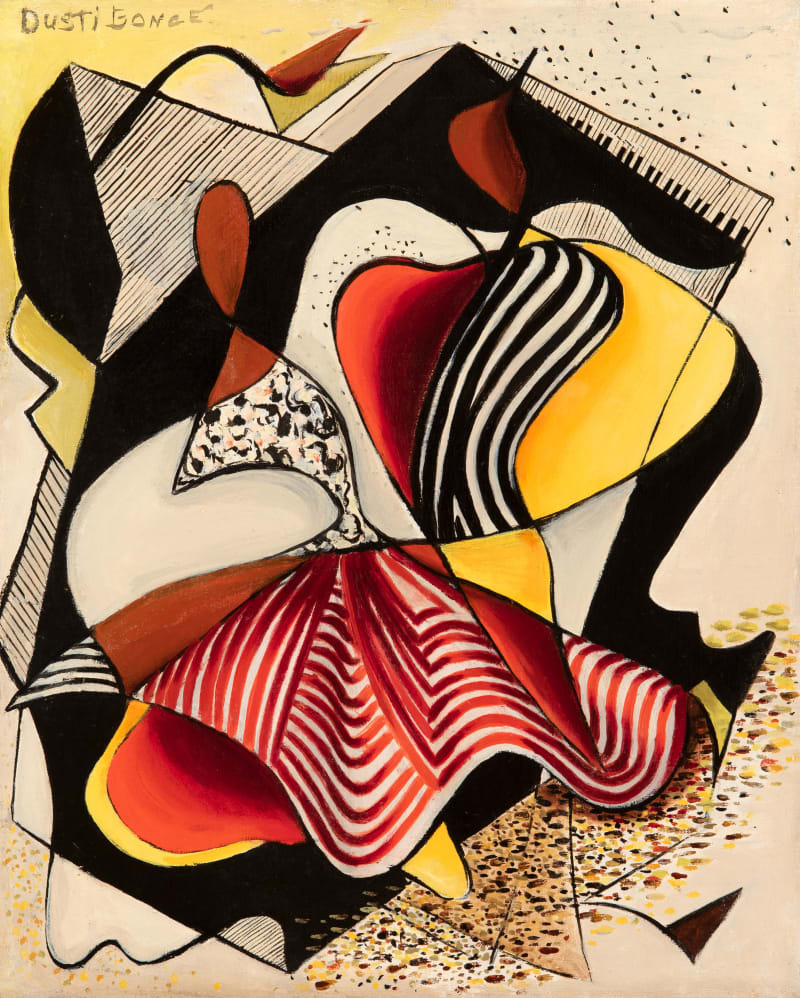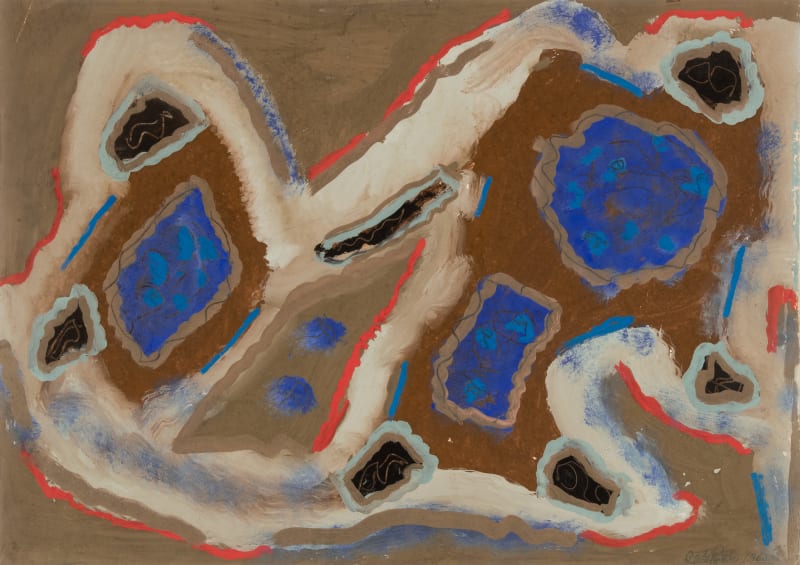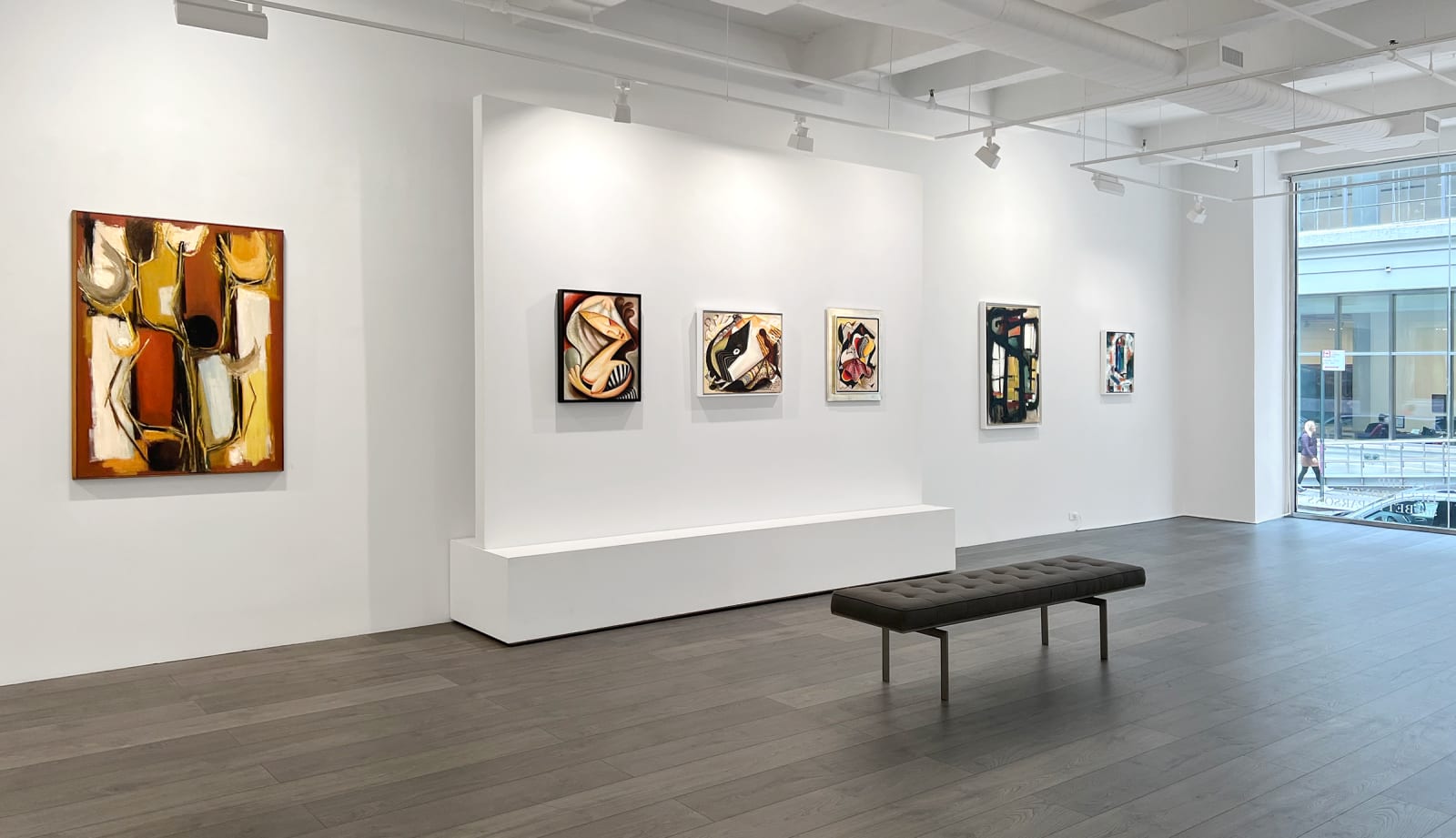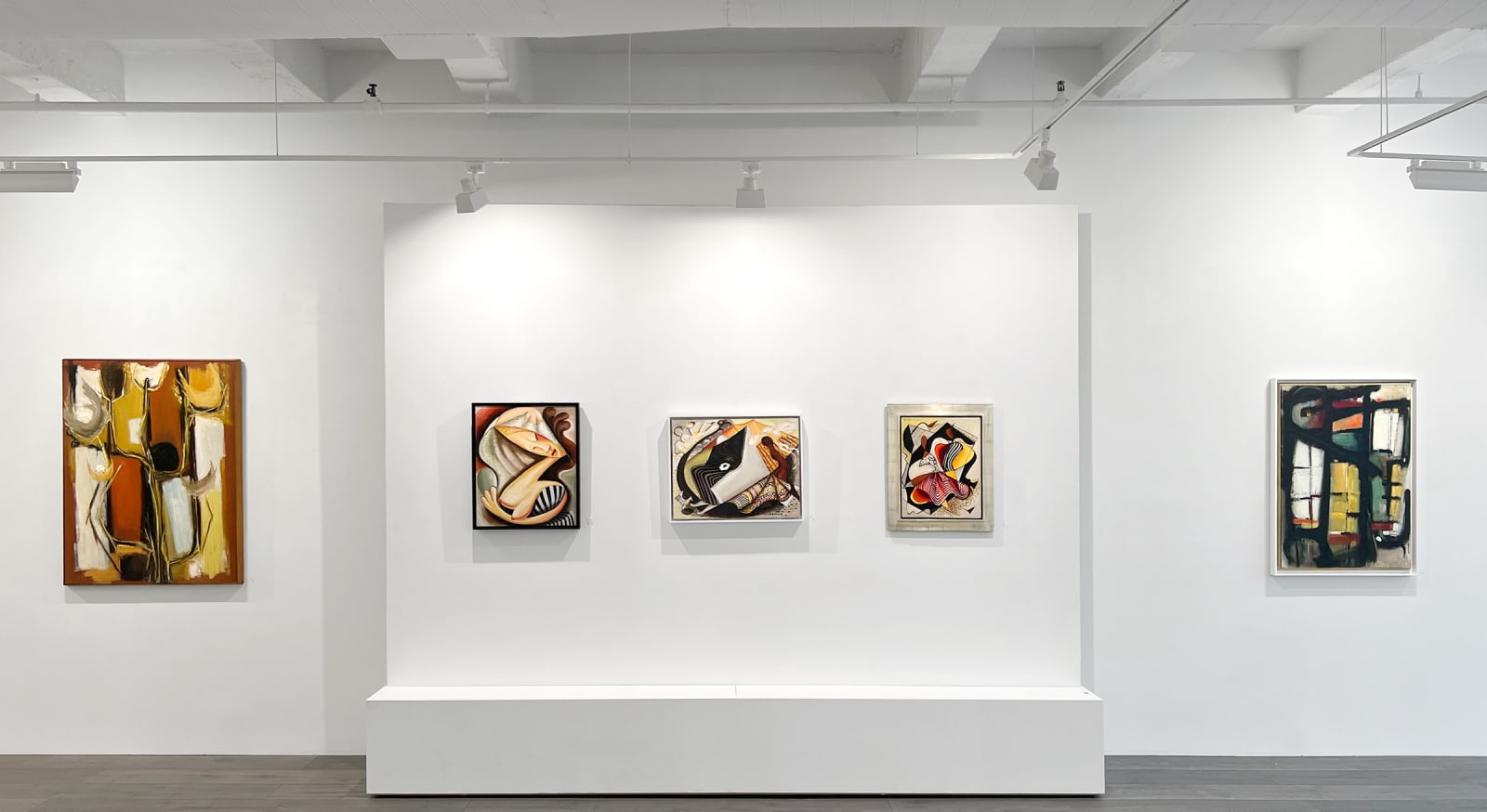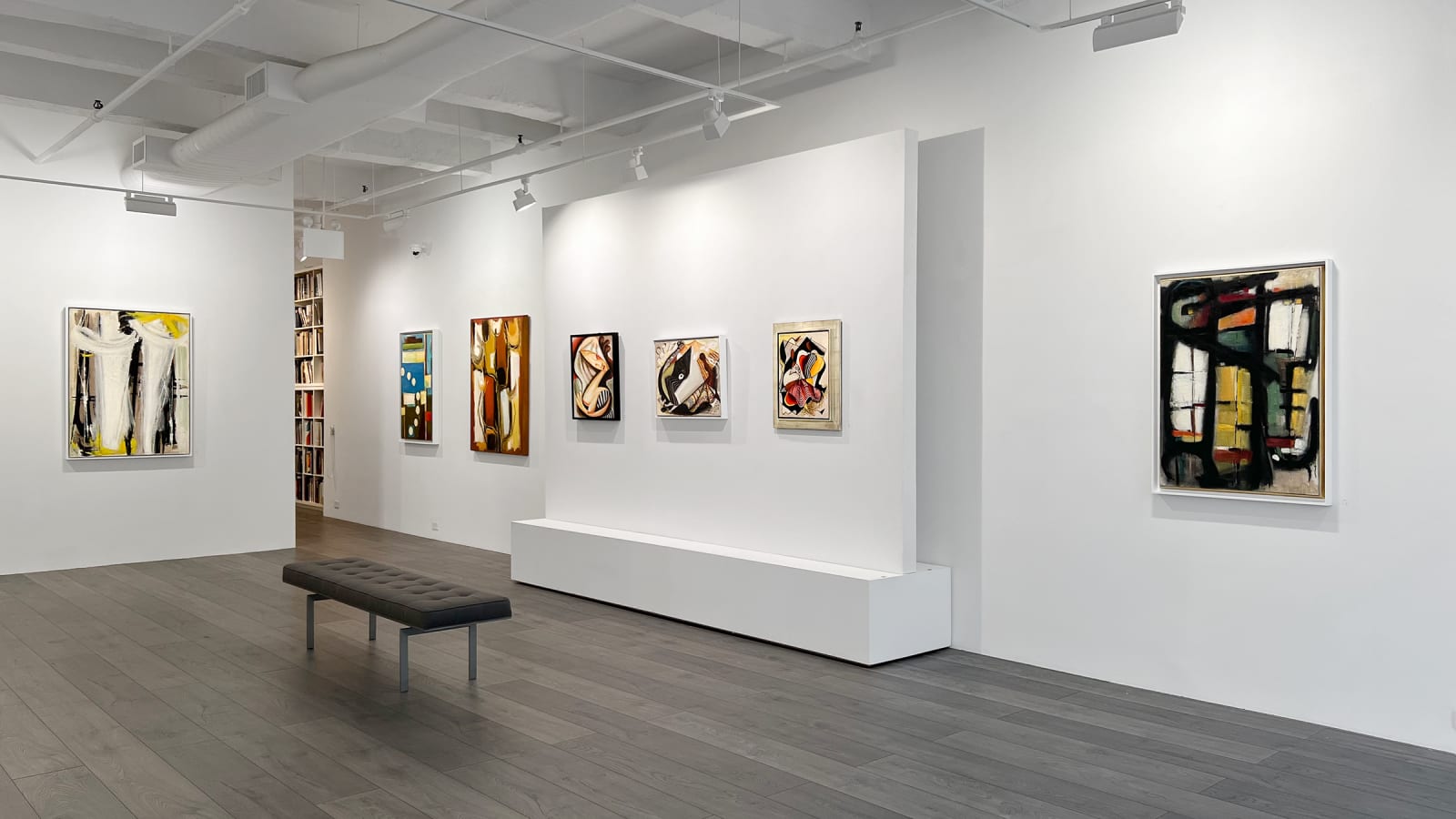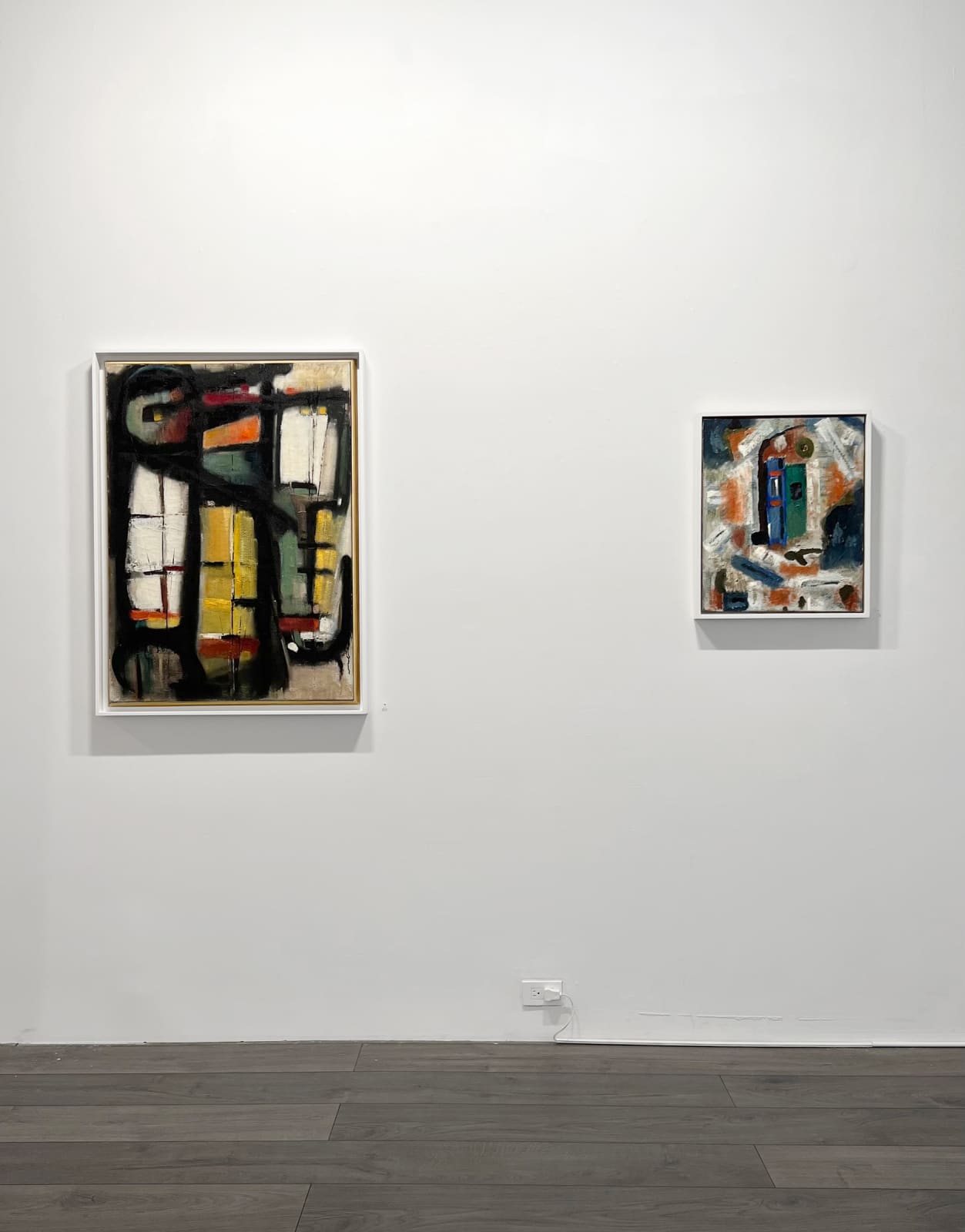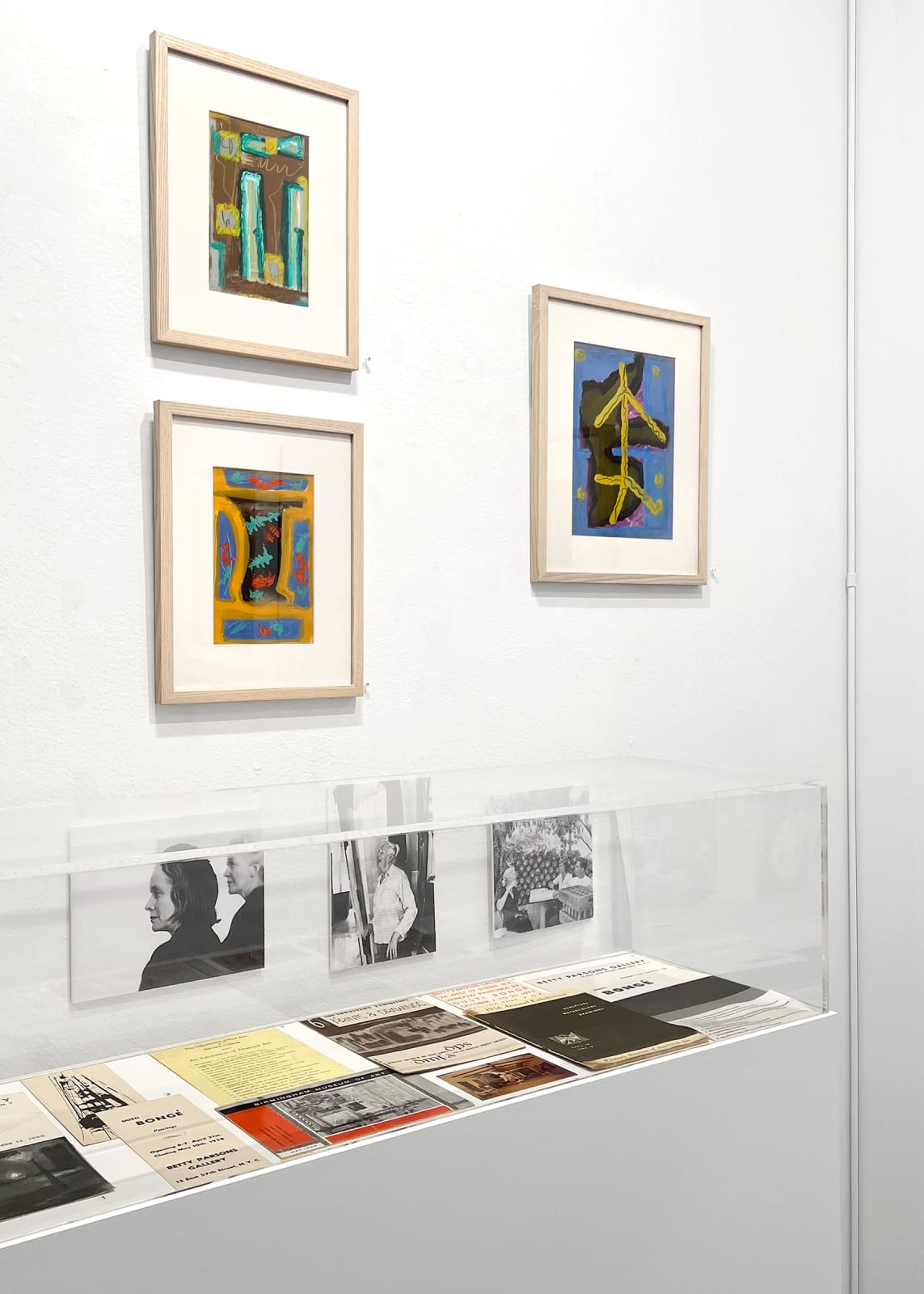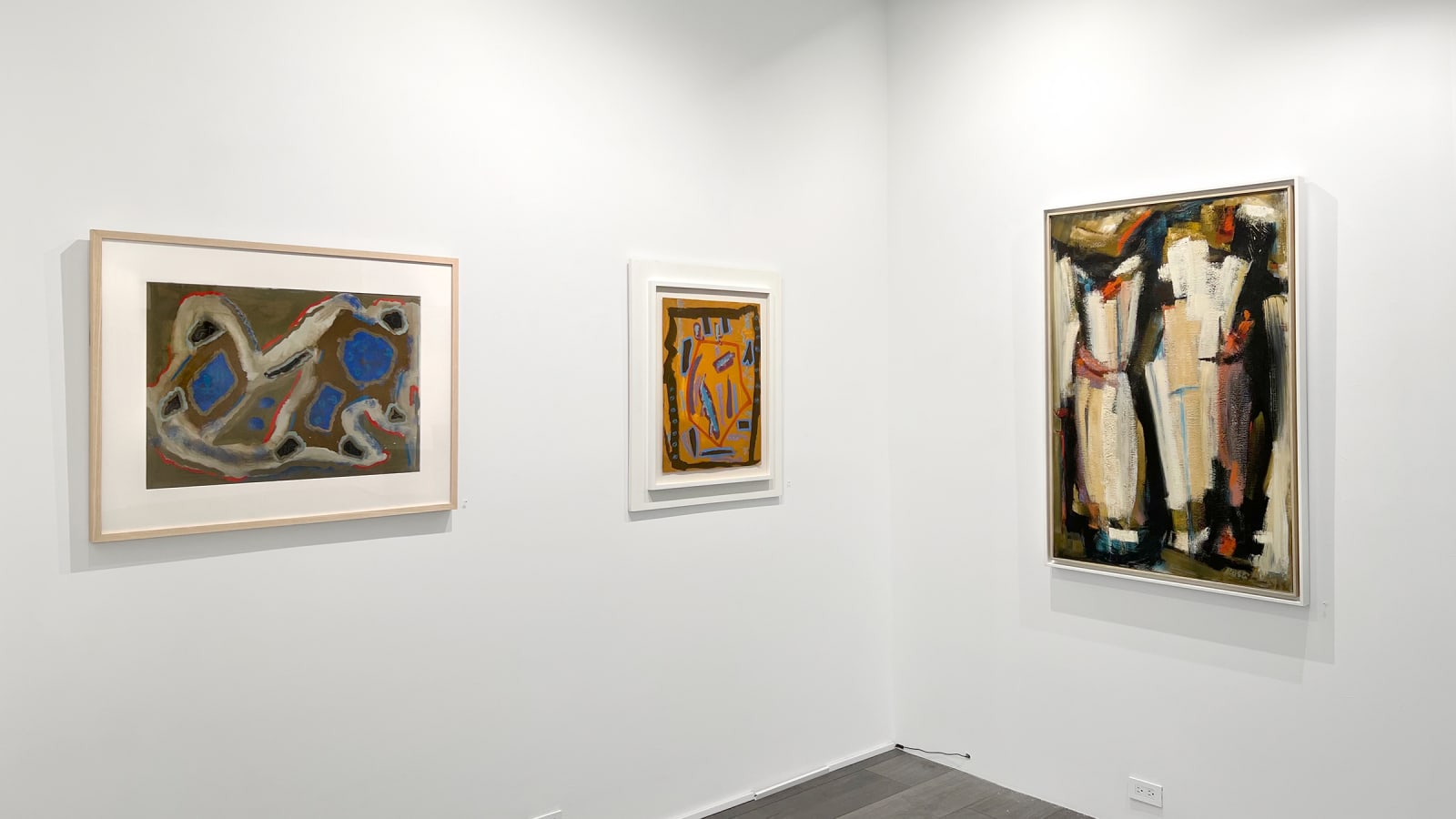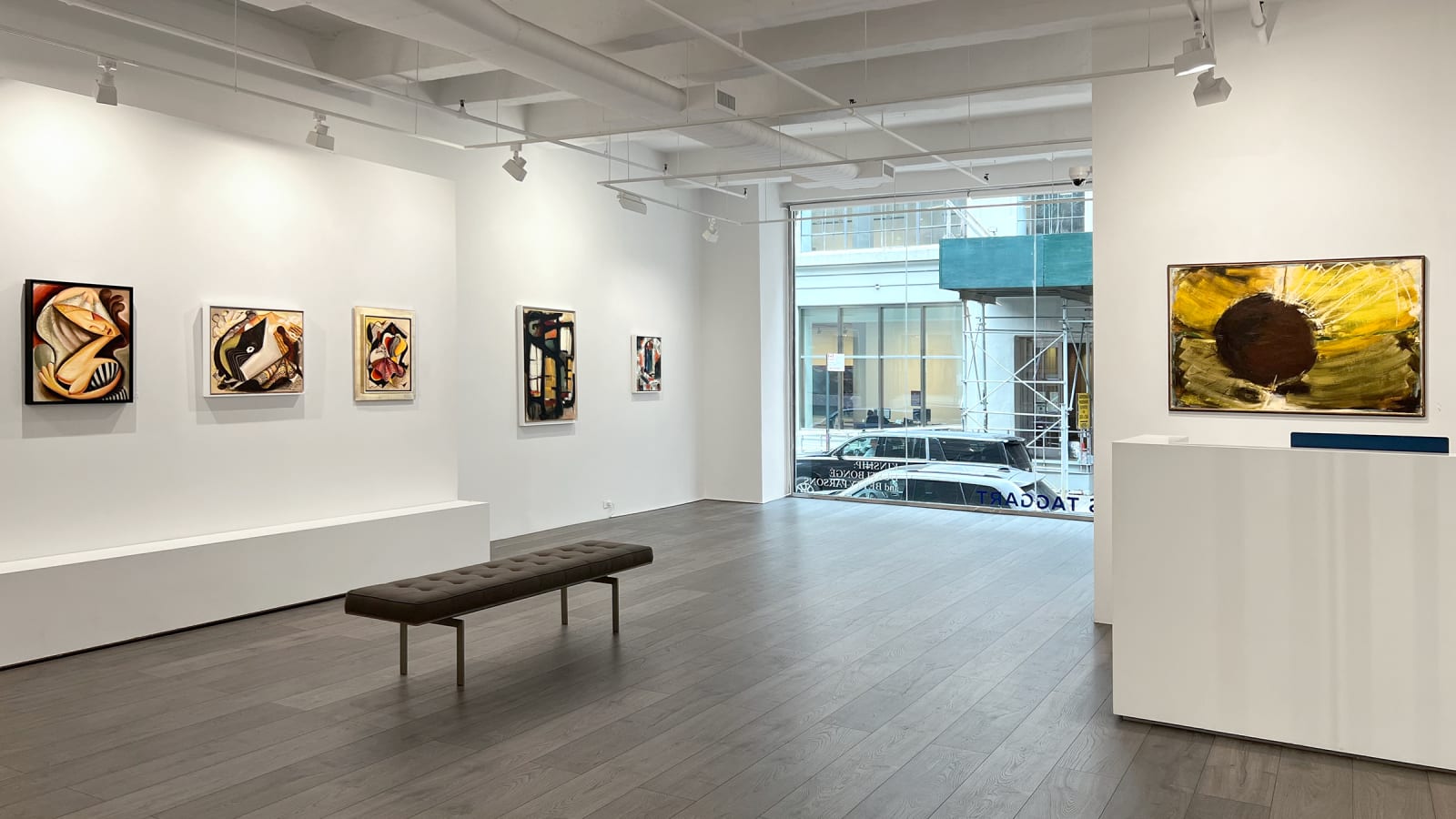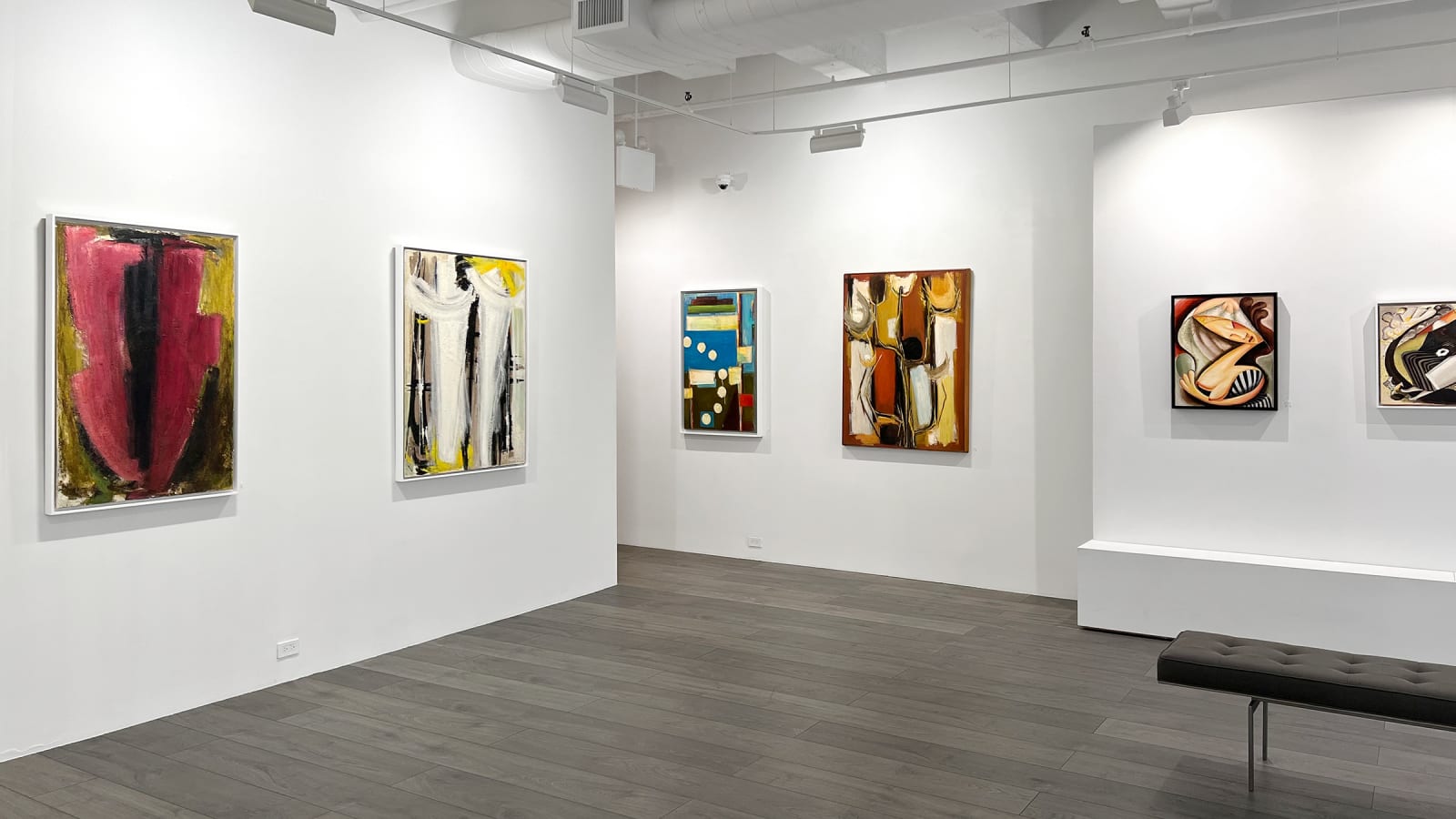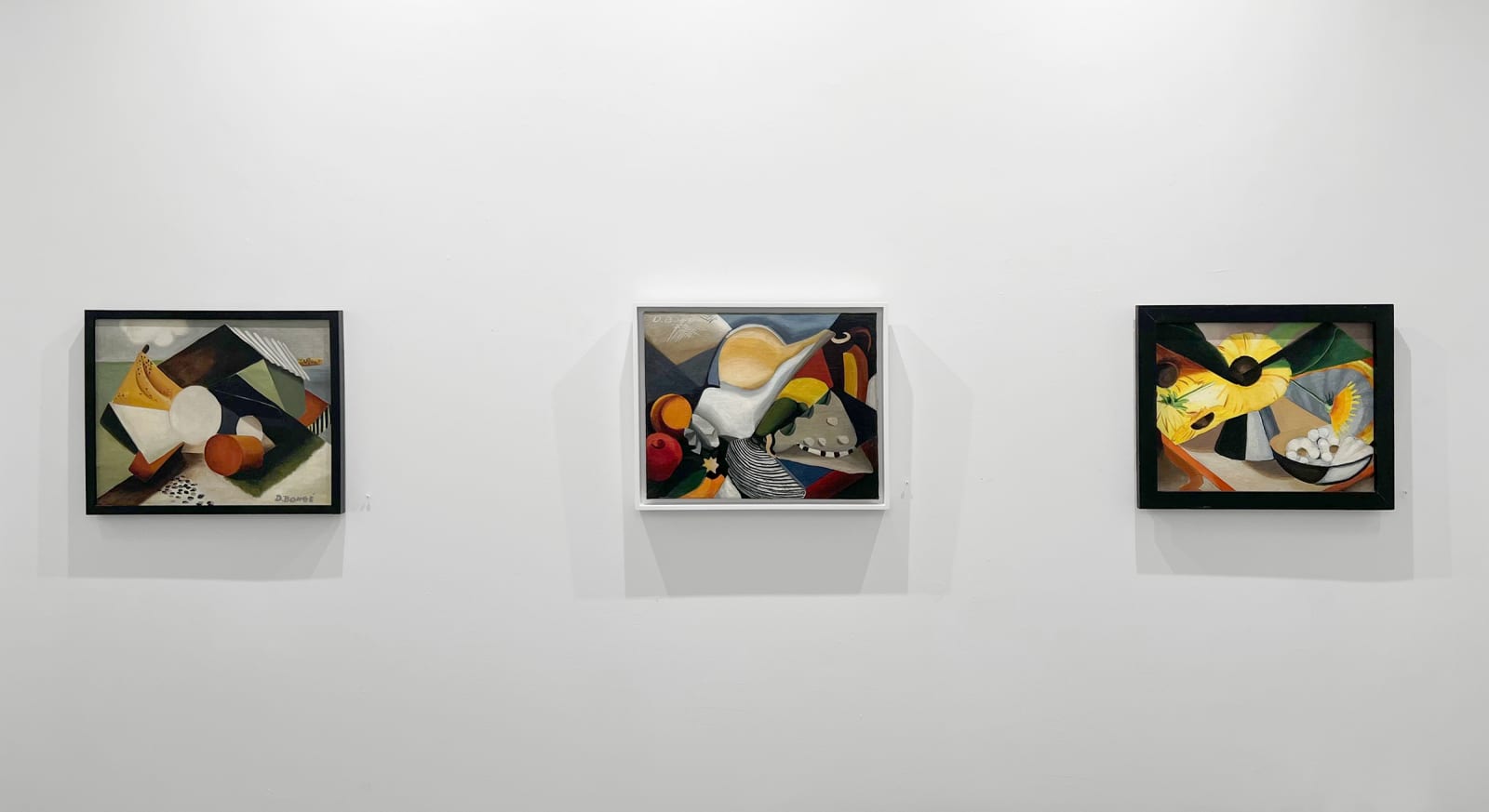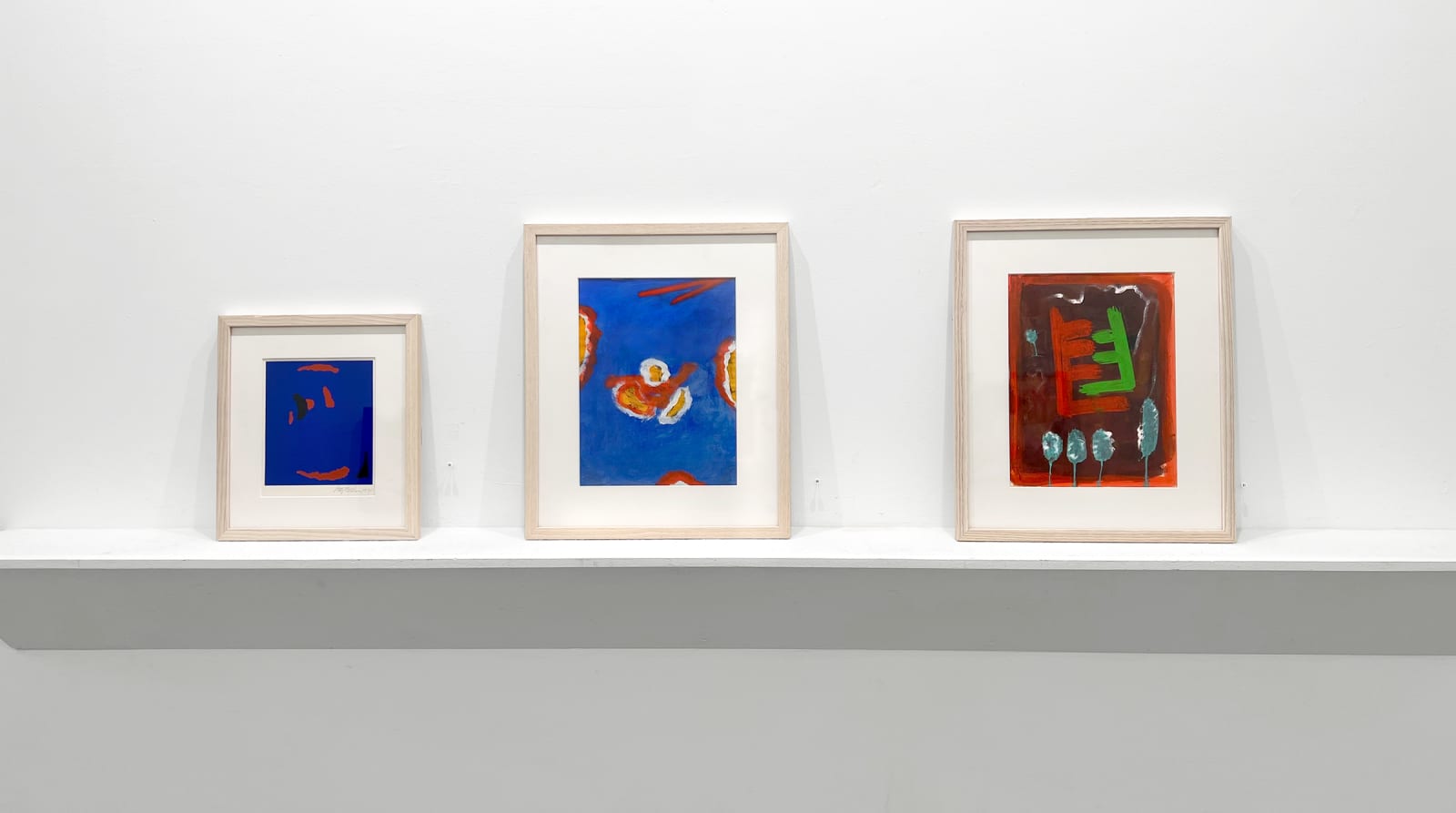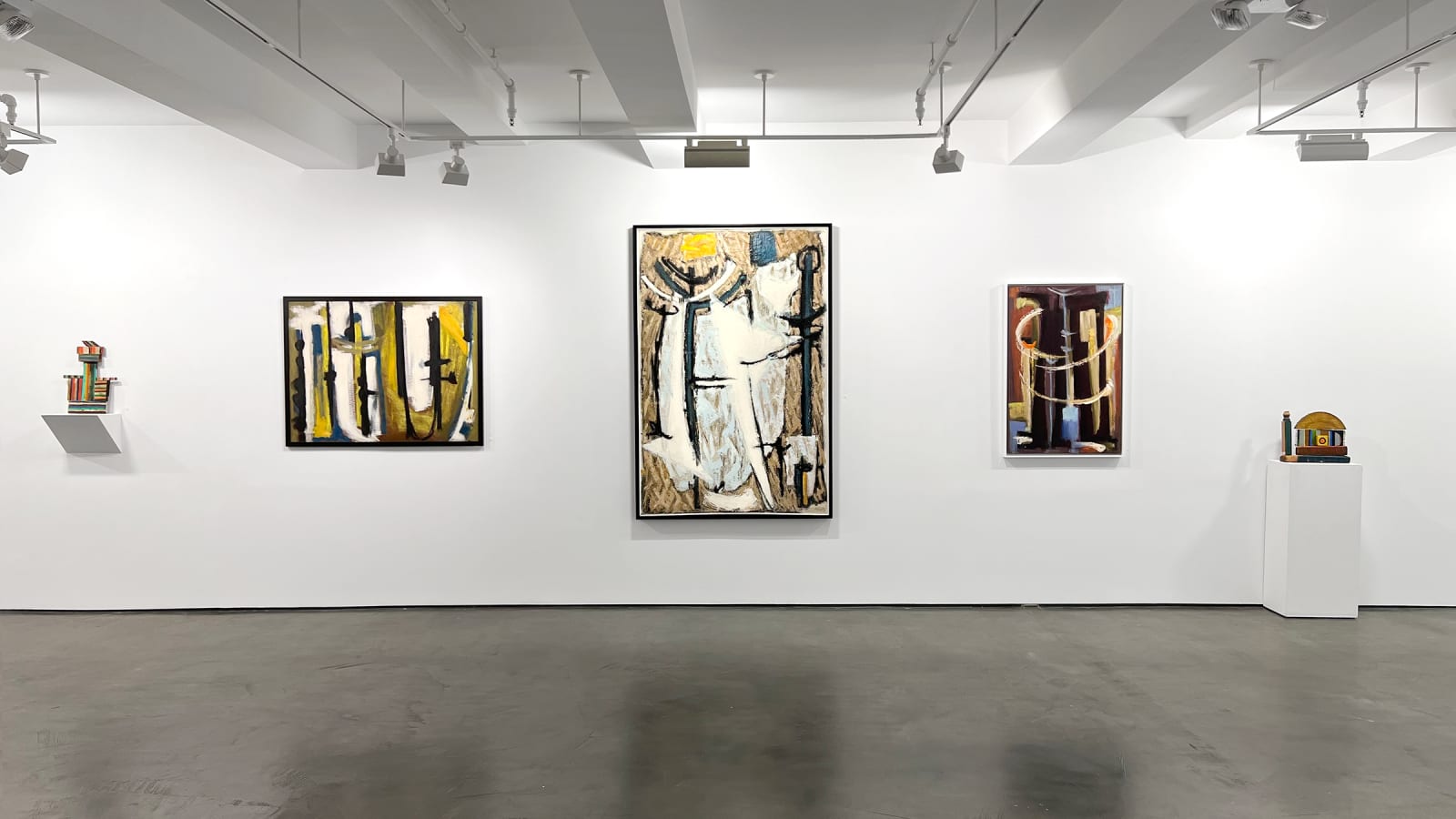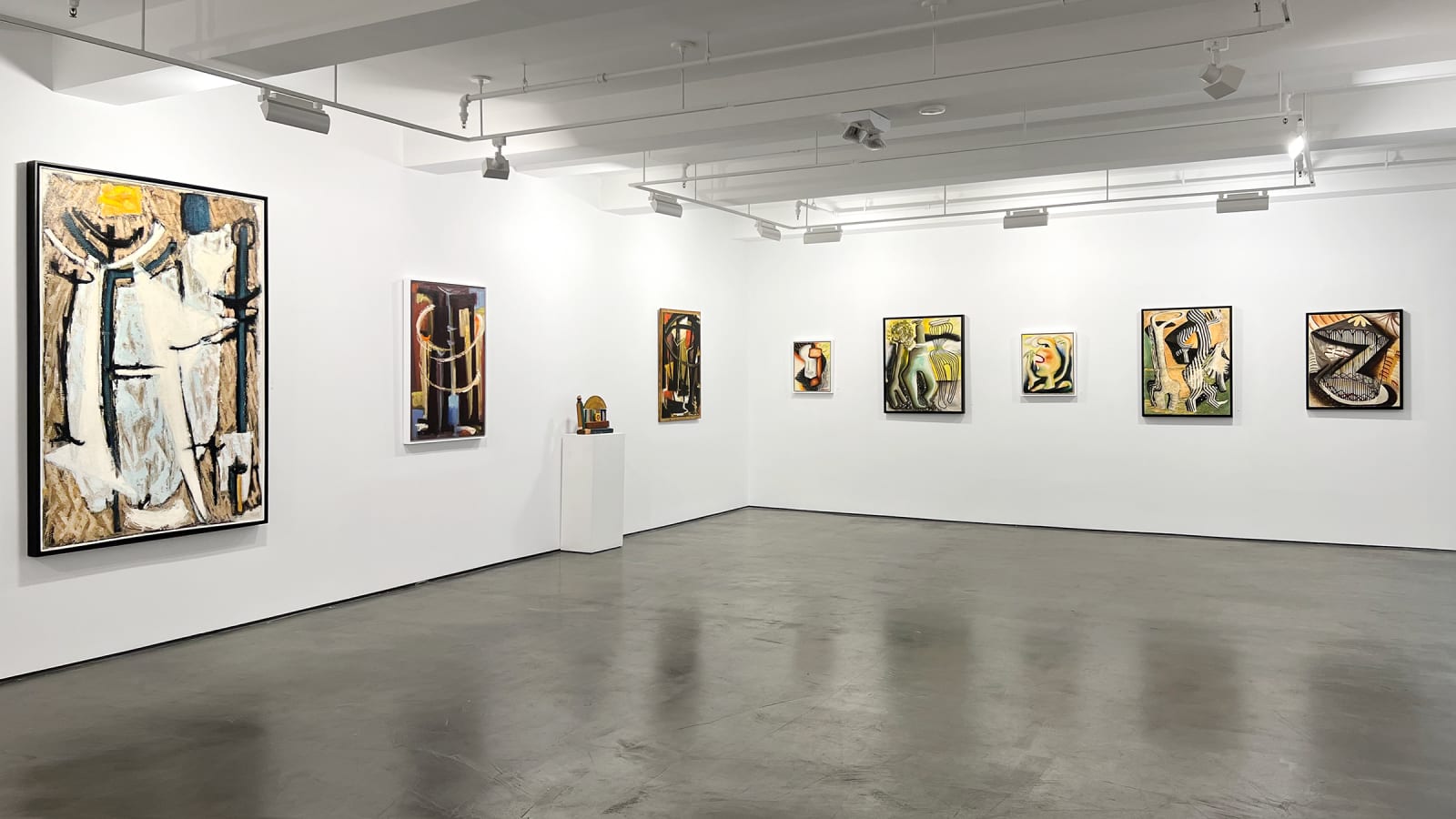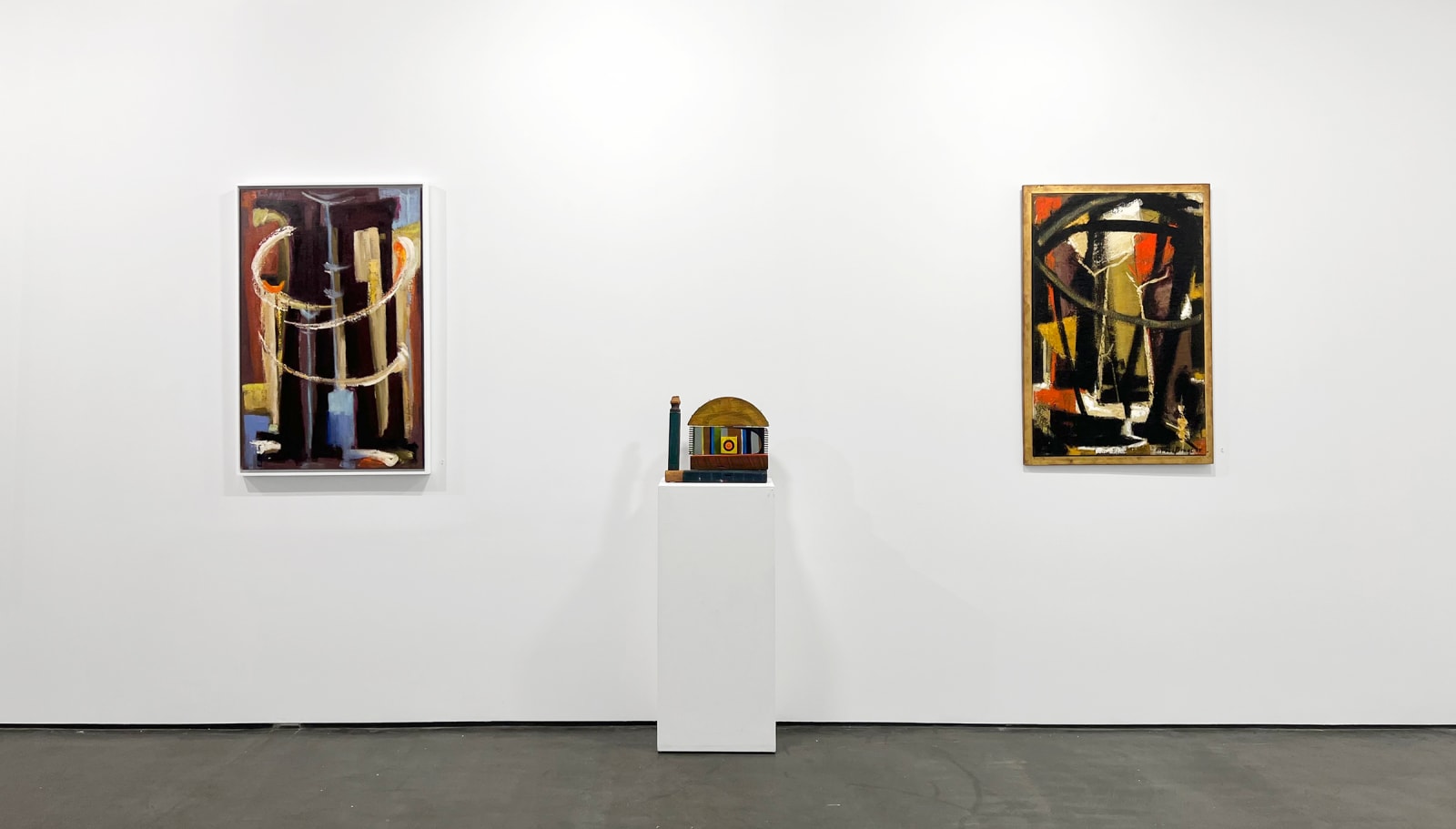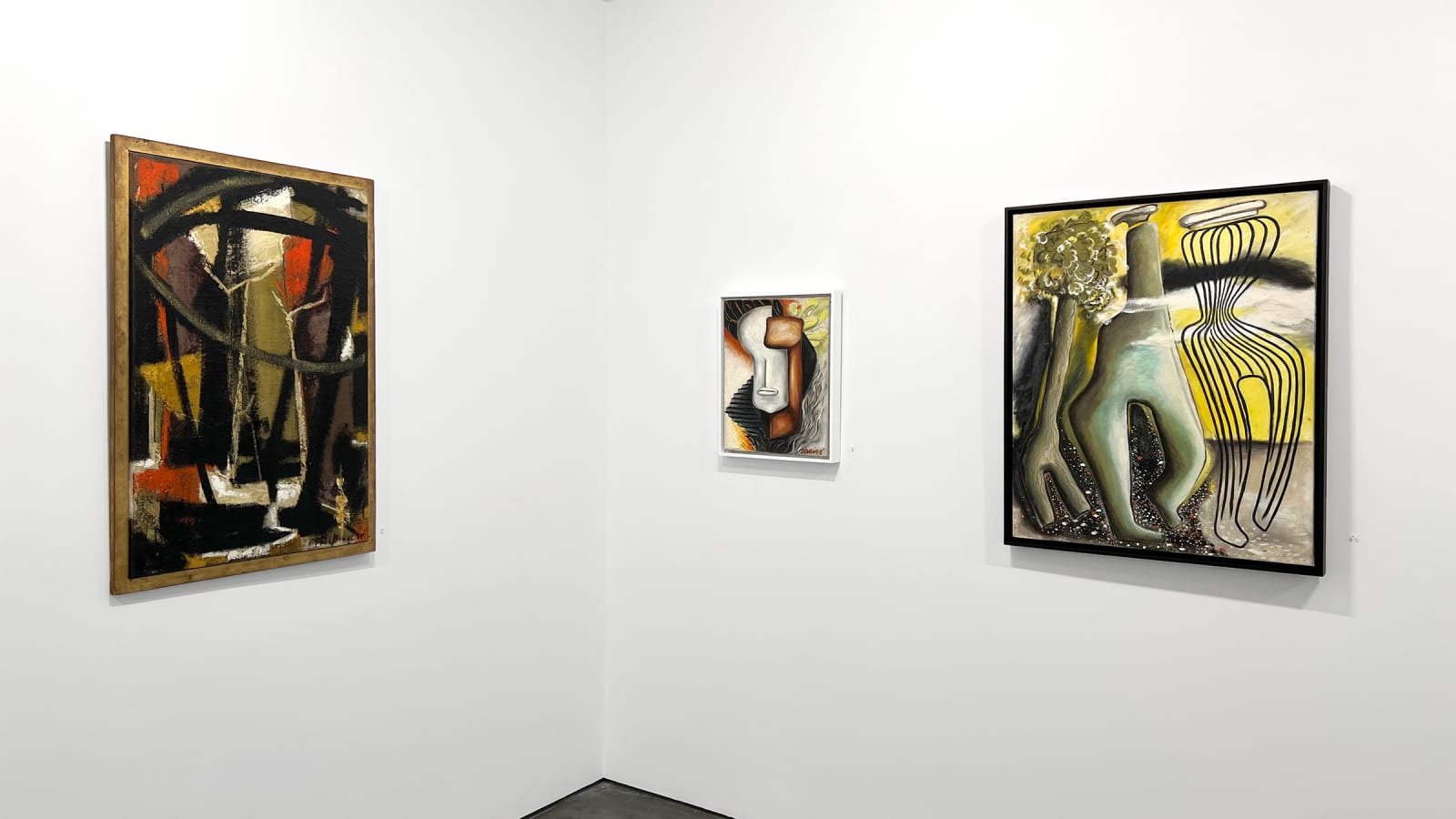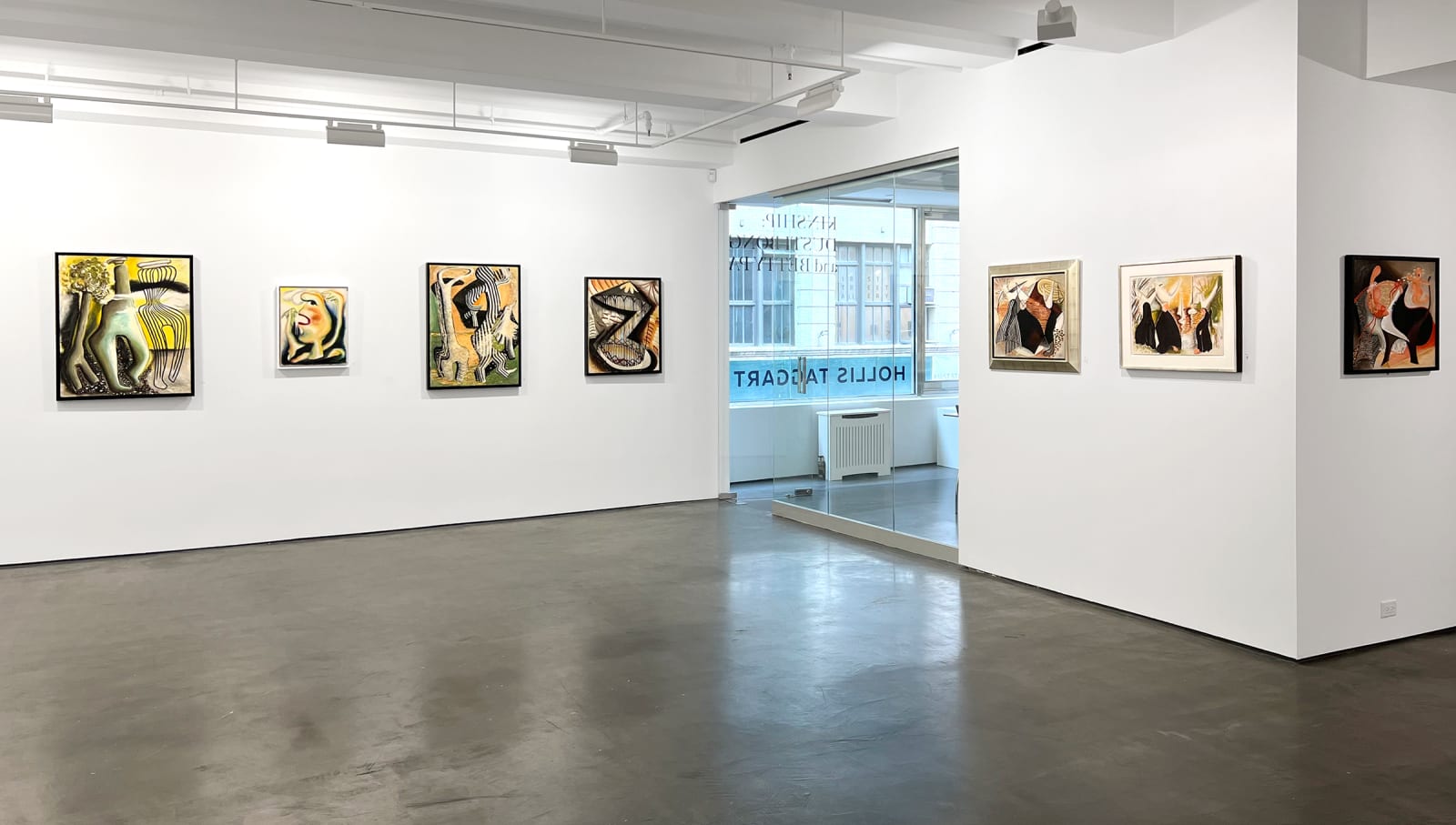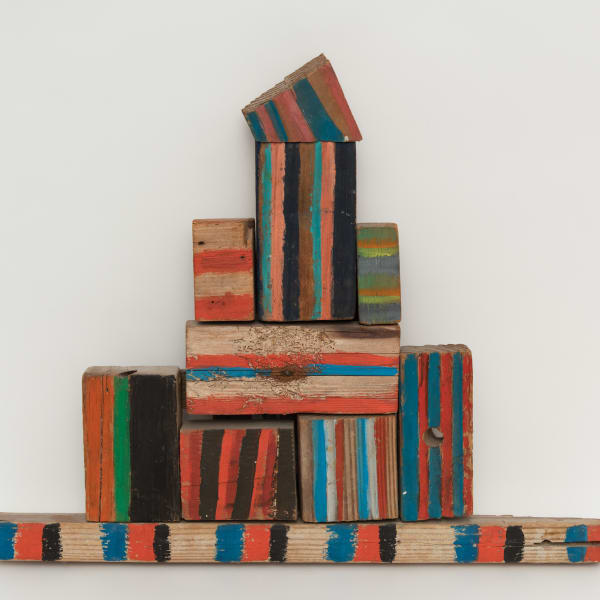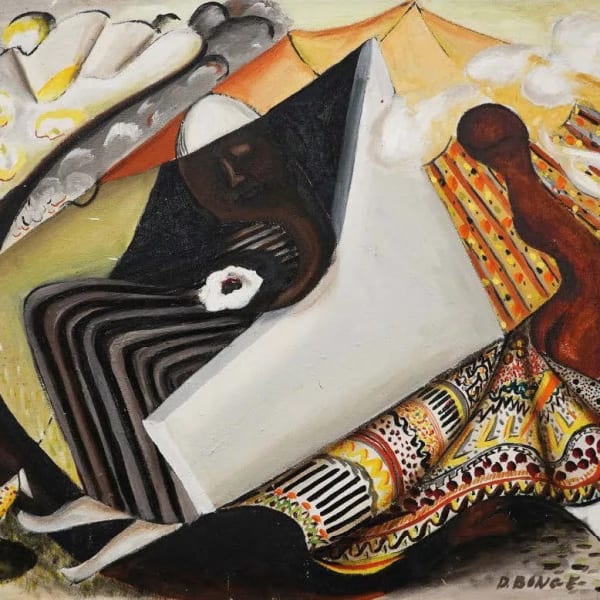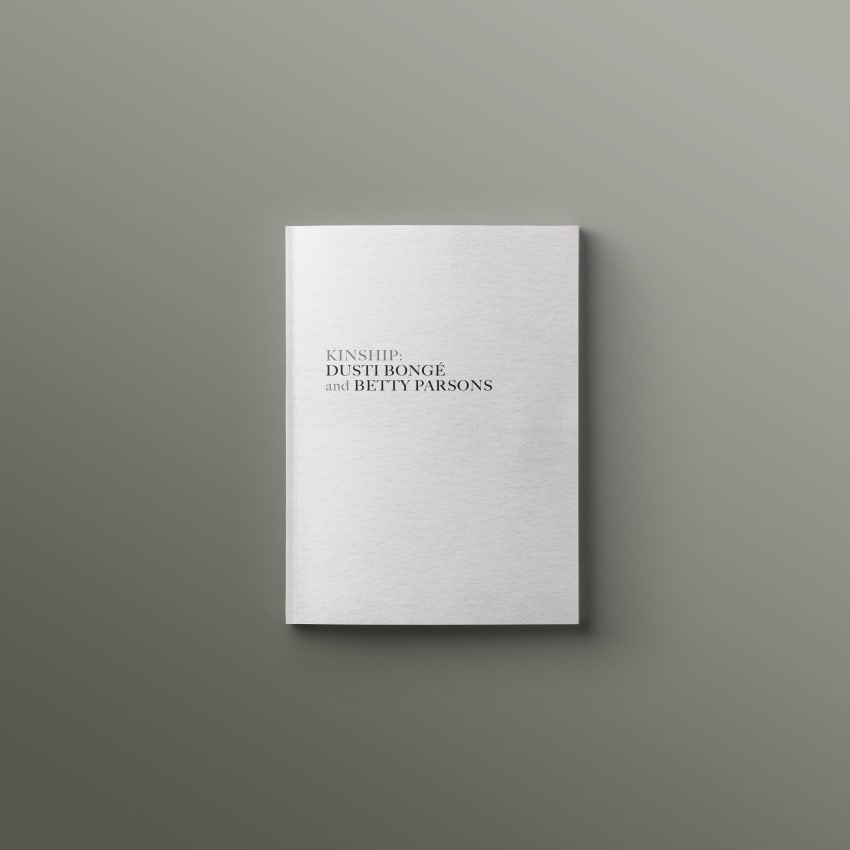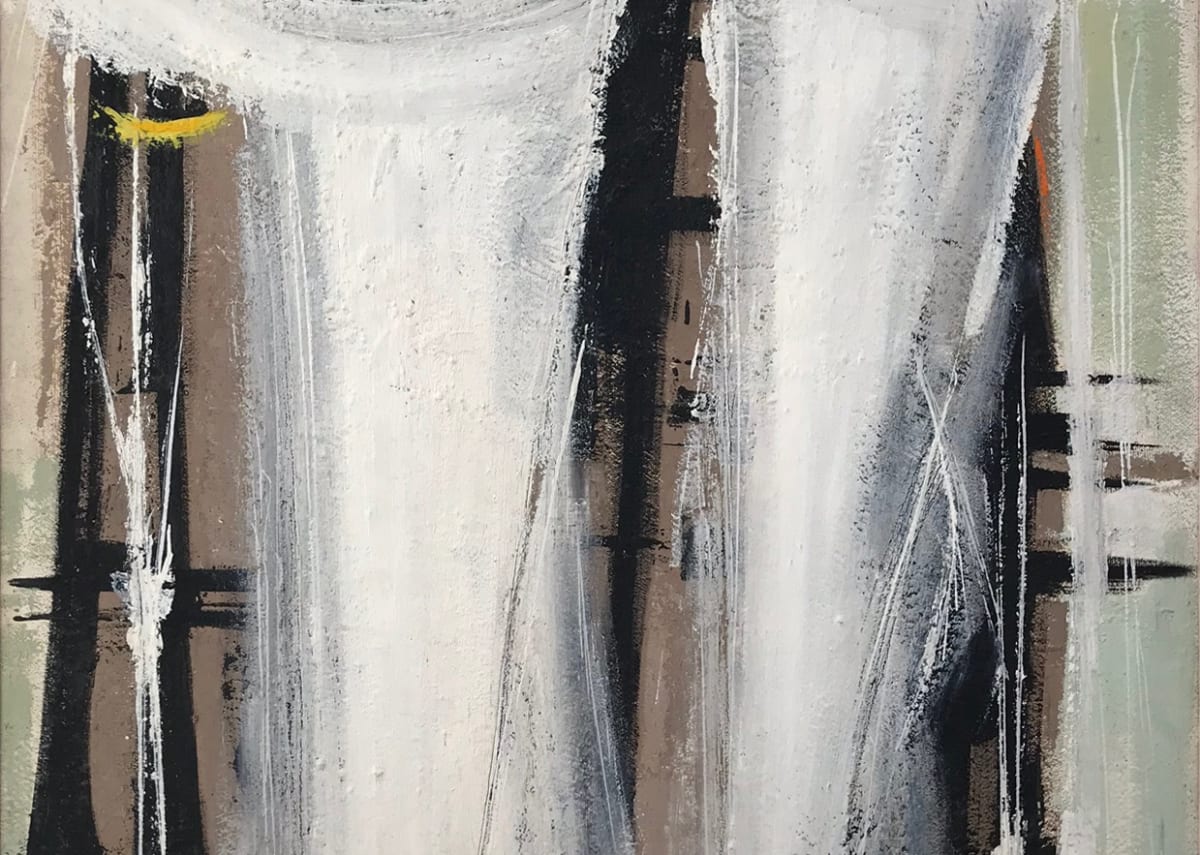
The exhibition captures the significance of network and relationship-building among women within the art ecosystem at midcentury, with Parsons leveraging her own success as a gallerist to bring forward Bongé’s innovative vision and work.
Hollis Taggart will present Kinship: Dusti Bongé and Betty Parsons, an expansive exhibition on the illustrious but lesser-known career of artist Dusti Bongé and her devoted friendship with legendary gallerist and artist Betty Parsons. On view from October 13 to November 12, 2022, the exhibition is the first to examine Bongé's close personal and professional ties with Parsons and the ways in which their relationship shaped Bongé's career. The show also marks the official opening of Hollis Taggart’s expanded flagship location in Chelsea, which nearly triples the gallery’s size. Now occupying the ground and second floors at 521 W. 26th Street, the gallery boasts more than 6,800 square feet of exhibition, private viewing, and storage space. The opening of the exhibition will be celebrated with a reception for the press and the public on October 13 from 5 to 8 pm.
Kinship: Dusti Bongé and Betty Parsons, which will occupy both floors of the gallery, includes 35 works by Bongé, reintroducing audiences to the full arc of her career, with examples of her Modernist, Surrealist, and Abstract Expressionist paintings and works on paper. It will also feature 15 works by Parsons, most of which were gifted to Bongé throughout their friendship and have never been seen before, as well as archival material, such as vacation photographs from the duo’s travels to Mexico and the Gulf Coast. The exhibition captures the significance of network and relationship-building among women within the art ecosystem at midcentury, with Parsons leveraging her own success as a gallerist to bring forward Bongé’s innovative vision and work. This is the first major showing of Bongé’s work since Hollis Taggart began representing the estate in 2021, and it is accompanied by a catalogue with an essay by curator Gwen Chanzit, who in 2016 organized the groundbreaking exhibition Women of Abstract Expressionism at the Denver Art Museum.
Bongé lived and worked mainly in the Gulf Coast, specifically in Biloxi and New Orleans, as it afforded her distance and independence from prevailing trends. After experimenting with Cubism in the late 1930s, she worked within a Surrealist vocabulary for a decade, heavily influenced by the absurdity of the circus. This period of work was of particular interest to Parsons, who recognized the importance of elevating female Surrealists of the time. Over time, Bongé’s practice became more abstract, and she began painting in a fully Abstract Expressionist style by 1955, with colors inspired by the Gulf Coast and broad, gestural brushstrokes. These paintings formed the core of Bongé’s presentations at Parsons’ gallery, as well as her painted sculptures, or “shape paintings,” in the 1960s. She continued working with oil paints until the early 1980s, when she started creating small-scale abstract watercolors, often with gold or silver leaf overlay. She painted her last work in 1991.
Although she lived in the South, Bongé kept strong ties to the New York art scene, especially through her close relationship with Parsons, who Bongé first met in 1945. Soon after, Bongé joined the eponymous Betty Parsons Gallery and the two women became fast friends, who frequently corresponded and visited each other. Bongé had her first Betty Parsons Gallery solo exhibition in 1956, which solidified Bongé’s position among the ranks of other iconic artists represented by Parsons, including Jackson Pollock, Robert Rauschenberg, Mark Rothko, Lee Krasner, Hedda Sterne, and Clyfford Still. Bongé was featured in group exhibitions at Parsons’ gallery in 1955, 1957, 1958, and 1960, and in five solo shows in 1956, 1958, 1960, 1962, and 1975. The forthcoming exhibition captures the development and trajectory of Bongé’s work and career, while also exploring the ways in which it was intimately interwoven with Parsons’ own life and professional success.
“Dusti Bongé had a fascinating, varied practice, and we are excited to shine a light on her long and successful career. In particular, we are looking forward to sharing her strong, yet least known work as a Surrealist painter. The undersung women of Surrealism are having a well-deserved cultural moment right now, thanks to the Venice Biennale exhibition The Milk of Dreams, and we are proud to join in that conversation with Bongé’s incredible work. We have long supported the reengagement with and rediscovery of under-recognized female artists such as Michael (Corinne) West, Marjorie Strider, Idelle Weber, and Irene Monat Stern, and recently sponsored the catalogue raisonné of American Surrealist artist Kay Sage. It is our pleasure to give Bongé, and her friendship with her champion Betty Parsons, a spotlight,” said Hollis Taggart.
Dusti Bongé
Dusti Bongé was born Eunice Lyle Swetman in 1903. After graduating from Blue Mountain College in Mississippi in 1922, she moved to Chicago to pursue a career in acting. In 1928, she married the artist Archie Bongé, who encouraged her natural artistic abilities, after she once drew him a still life to make up for an argument. After Archie died in 1936, Bongé began developing her own career as professional painter while raising her young son, Lyle, as a single mother. In the 1950s, Bongé became an important point of connection between the vibrant art communities of Biloxi, New Orleans, and New York. In addition to her exhibitions at Betty Parsons, Bongé was featured in group shows at the Mississippi Museum of Art (1953), Museum of Modern Art New York (1955), Museum of Fine Arts, Houston Texas (1956), Dallas Museum of Art (1956), Whitney Museum of Art (1956), Museo Nacional, Havana, Cuba (1956), Brooklyn Museum of Fine Arts (1959) and Birmingham Museum of Art (1959). Her paintings are in the collections of the Museum of Modern Art, New York; the National Museum of Women in the Arts, Washington D.C.; Ogden Museum of Southern Art; Mississippi Museum of Art; among others.
Betty Parsons
Perhaps one of the most powerful and invaluable contributors to the Abstract Expressionist movement, Betty Parsons’ legacy lies within her early promotion of and undying faith in the emerging New York artists of the 1940s and 1950s. Beginning in the 1940s, Parsons worked as a dealer and gallerist amongst the rapidly changing New York art scene, showing the works of notable artists including Mark Rothko, Robert Rauschenberg, Jackson Pollock, Barnett Newman, Agnes Martin and Richard Pousette-Dart, long before they achieved notoriety. For decades, her reputation as an art dealer overshadowed her identity as an artist, but the extensive impact she made on a multitude of careers owes to her deep interest in her own practice. Even with the opening of her own gallery in 1946, she closed during the summers to focus on her work, painting and sculpting in her Tony Smith-designed Long Island studio. Her work exudes a palpable ease and effortlessness that reflect her strengths as a natural and instinctive colorist, made richer by her many travels. Parsons’ work is held in many public collections including Museum of Modern Art, New York; Carnegie Museum of Art, Pittsburgh; High Museum, Atlanta; National Museum of Women in the Arts, Washington, DC; Smithsonian American Art Museum, Washington, DC; Whitney Museum of American Art, New York; among others.
For more information about Kinship: Dusti Bongé and Betty Parsons, please contact us at info@hollistaggart.com or +1 212.628.4000.
For press inquiries, please contact us at press@hollistaggart.com or +1 212.628.4000.
Main image: Lyle Bongé, Betty Parsons and Dusti Bongé, c. 1957, Photograph, Paul Bongé Collection
Artworks










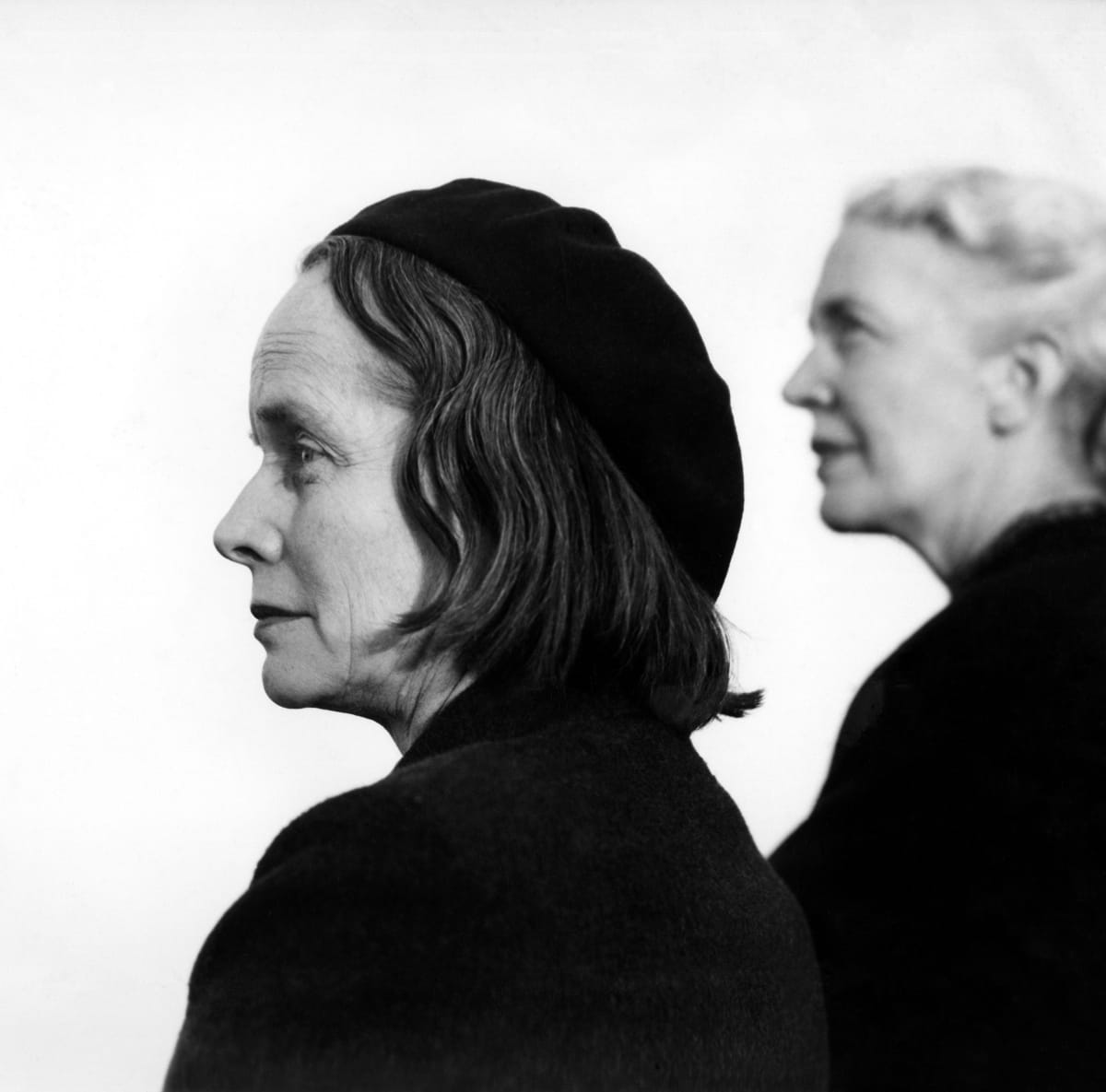
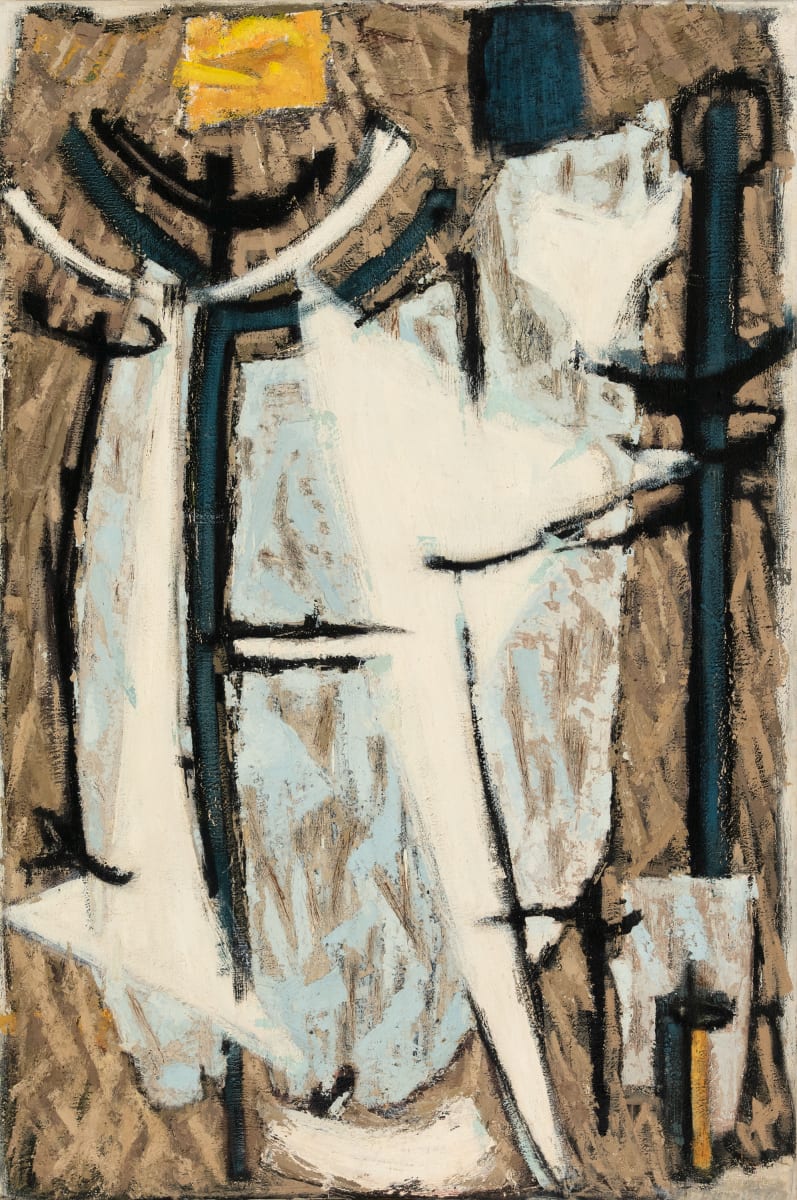
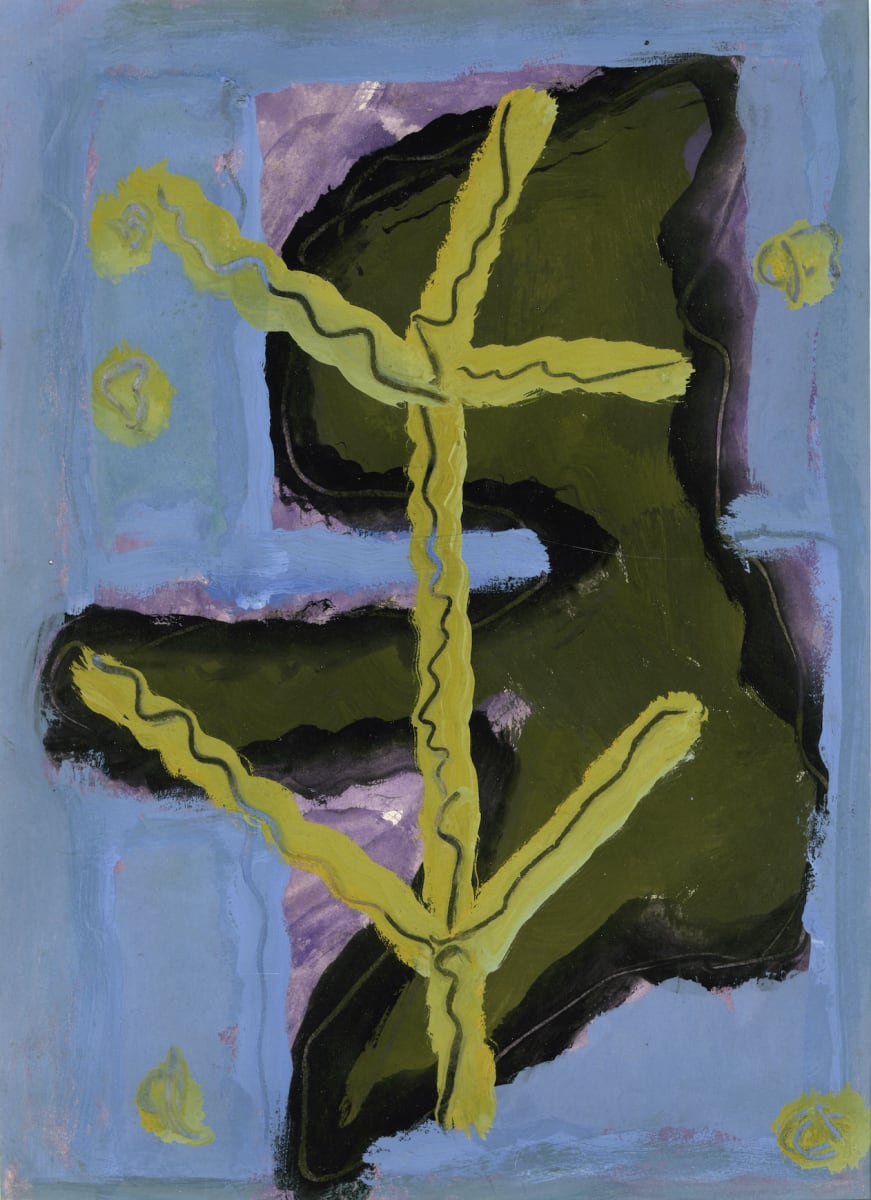
![Betty Parsons Devil in the [...], 1973 Gouache on paper, 11 3/4 x 9 in. (29.8 x 22.9 cm)](https://artlogic-res.cloudinary.com/w_800,c_limit,f_auto,fl_lossy,q_auto/artlogicstorage/htg1979/images/view/3ea87e7b1f822afc479fb932f9786258j/hollistaggart-betty-parsons-devil-in-the-...-1973.jpg)


